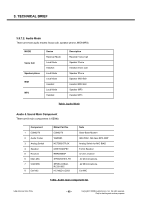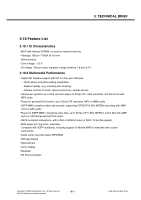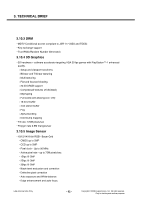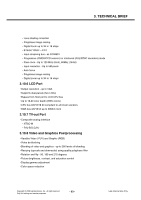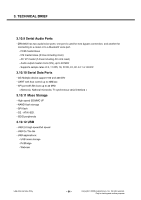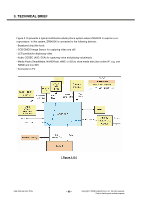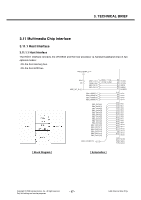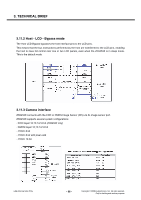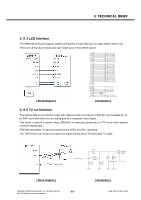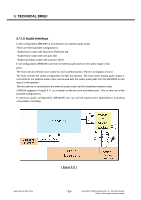LG KE990 Service Manual - Page 64
Host Port, 10.14 Clocks, 10.15 Boot, 10.16 Debug, 10.17 Power
 |
View all LG KE990 manuals
Add to My Manuals
Save this manual to your list of manuals |
Page 64 highlights
3. TECHNICAL BRIEF 3.10.13 Host Port • Two flavors: - Generic interface 8/16-bit Intel style. Connects as memory map (4-bit address) - LCD like 8/9/16 bit multiplexed bus. Connects as an LCD (1-bit address) • Bypass mode - From Host port up to two LCDs, audio codec and other peripherals • Support for messaging and data transfers (DMA) 3.10.14 Clocks • Main clock input frequency, 10 to 31 MHz: - Directly from system PMU main clock and bypass its control - Embedded crystal oscillator (12Mhz) - Optional GPS TCXO • Four configurable clock-out pins to drive external components: e.g. Audio codec, Sensor, PWM) 3.10.15 Boot • Host boot • Standalone boot 3.10.16 Debug • JTAG for code debug • UART for fast system ramp up 3.10.17 Power • Very low power consumption, smaller than150mW for all intense multimedia applications. • Low power sleep mode 100 µW - Host can control display audio and peripherals via bypass Light sleep mode 500 µW - Specifically for GPS accurate off-line tracking Copyright © 2008 LG Electronics. Inc. All right reserved. Only for training and service purposes - 65 - LGE Internal Use Only



